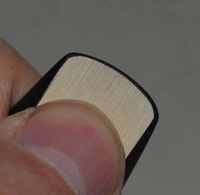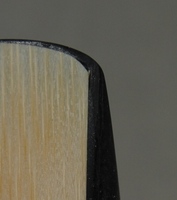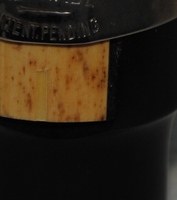Optimal Reed Installataion on the Saxophone
As we play, practice and lean we make interesting discoveries. Many of these are of the "I wish I'd known that earlier" kind. One such discovery is the proper installation of a reed on a mouthpiece. In reality, it's pretty simple; in practice it's pretty easy to screw up. I've found that there are two important issues to think about each time you install a reed: Alignment and moisture.
I'll be using the proper names for the parts of the mouthpiece. Here's a nice, labelled picture for reference.
Moisture
The easy issue is moisture. You might well as why it matters at all? And my belief is that for the most part it doesn't. If you see a player constantly sucking on a reed or leaving it in a glass of water for extended periods, you probably know a player who is trying to use a reed that is too hard. Lots of moisture will soften it. Might be better to just get a softer reed?
However, that doesn't mean that you can use dry reeds. My experience is that you need moisture on (notice I didn't say "in") the heel of the reed: that's the part which doesn't vibrate. Huh? Why there? Simple—moisture is needed to generate a good seal between the reed and table of the mouthpiece.
There are two ways to get enough moisture into the reed to ensure a proper seal. The right way is to keep the reed moist in a proper case. One player I know and respect selects the reed(s) he will be using tomorrow and puts them on a damped sponge. Cool. I don't plan that far ahead in my life. I use the gross method of putting a large glob of spit on the mouthpiece table and then lying the reed on that. I'll spare you the photos. Oh, and if you do this in front of an audience make sure you do it discreetly—the reputation of sax players is bad enough! Test that the reed is wet enough by lifting it off the table after playing for a few minutes—if there is not a nice shimmer of moisture you need more water or spit ... the moisture between the reed and table is absorbed by the reed and then you have a "dry" connection and a possible leak. By the way, soaking a reed in water for an hour before playing usually doesn't make it wet enough.
Alignment
There are three areas to check for proper alignment when mounting a
reed: the tip, side rails and the butt.

I like to have a "hair" of mouthpiece tip showing when I push the
reed down with my thumb (yeah, that's my beautiful digit in the
picture). You need to press down to see this. Make sure that the top
of the reed is centered. If you have too much mouthpiece showing
you'll get a leak and the reed will feel "softer"; having the reed
even with the mouthpiece (or even overhanging it) will make the reed
feel "harder", but you'll lose tone. You'll find a sweet spot for
the reed and mouthpiece—make a mental note and stick with what works.

The next alignments to look at are the left and right sides of reed against the rails of the mouthpiece. Depending on the width of the rails, this can be a minor or major consideration. The more narrow the rails, the more critical this becomes. In this image the reed has slid a bit to the left. It will leak and chirp while playing. You can feel this misalignment by running your thumb and index against both sides of the reed—both sides should feel about the same.

Make sure the end of the reed is centered on the mouthpiece as
well. If it's not you'll end up with leaks and, most likely, a dull
sounding reed.
A few other quick things:
- Install the mouthpiece on the neck first and leave it on. If you
try to put the mouthpiece on the neck after installing a reed the
odds are pretty good that you'll move the reed.
- I take the neck (with mouthpiece attached) off the saxophone when
doing adjustments. On a tenor hanging around my own neck I just
can't see the reed properly.
- Make sure the mouthpiece is aligned to your mouth. Don't twist you
head to line up to the horn—life is complicated enough!
- Make sure your neckstrap is adjusted properly. If you aren't
taking the mouthpiece into your mouth at a level angle you'll have
problems.
- I like to center the ligature about halfway on the vamp of the
reed with the same amount showing at each end. It probably doesn't
make a lot of difference.
- Finally, don't listen too much too all the BS about ligatures making a difference. They might, but not much (I've certainly never found any to worry about). People who say they can hear the difference are most likely lying. And having someone change your lig for their super special one probably involves more reed alignment than lig magic.
If you wish to share this document with others please link to it.
Please supprt the author by clicking on one of the ads at the top of page. Every penny helps a starving musician.
 |
This page was last modified on 2024-03-21 |